For its relatively small size, Hong Kong has so much to offer. From some of the tallest skyscrapers in Asia to verdant hills towering over white sand beaches, opulent luxury malls to lively traditional markets, centuries-old temples to an ultramodern museum of art, and small idyllic islands to ever-crowded streets where locals, migrant workers and foreign visitors rub shoulders. And if you want, you can go to one of the territory’s hiking trails, hop on a ferry to get to a tranquil island, go back to the city to check out some cultural venues, and have dinner at a beachside restaurant away from the bustle of the downtown area all in one day – a good night’s sleep should be guaranteed after all that rushing around. This is only made possible by Hong Kong’s extensive and highly-reliable public transport network which I later learned has not only brought immense benefits for people’s mobility, but it has also driven up property prices in the city to among the highest in the world. But that’s another story.
In my latest visit to this bustling city of seven million inhabitants last Christmas, I asked James if we could go somewhere I had never been. This, apparently, proved to be quite a challenge for him because I have seen a lot of the territory’s most interesting places. Using an old book of Hong Kong’s neighborhoods at his parents’ place as a reference, he then came up with the idea of exploring Yau Ma Tei and parts of Jordan in the Kowloon side of the city across the harbor from its financial district. While modern buildings are a common sight in fast-developing Hong Kong, and most of its heritage structures have been torn down, the city still has pockets of mixed residential-and-commercial areas that somewhat retain their traditional ambiance and spirit.
We began our exploration at a cha chaan teng – or Hong Kong-style café – where patrons usually go to have baked seafood rice and Hong Kong-style milk tea, among other things. Imagine fried rice which is then placed in a casserole dish, topped with stir-fried seafood, covered in cream sauce and cheese, then baked. This hearty, delicious meal is an example of what you can get when East and West are married, just like how Hong Kong is often perceived. To wash it down people often opt for a sweet and warm drink made from black tea and condensed milk or evaporated milk with sugar. With our stomachs full, we walked slowly – by Hong Kong standards – and crossed the street to reach Yau Ma Tei’s Tin Hau Temple compound. Dedicated to the namesake goddess who in Chinese folk religion is believed to be the protector of seafarers, fishermen and sailors, more than 100 temples across Hong Kong have been fully or partially built for her. This shouldn’t come as a surprise since for a long time Hong Kong was home to small fishing communities before it took a dramatic turn in the past century or so to become a global financial center.
From the temple, we continued walking around the neighborhood, one block after another, one densely-populated street with multi-story residential buildings after another. Some time later, we arrived at a small red brick building, the former engineer’s office of a 19th-century pumping station – the oldest in Hong Kong. As is the case with most heritage buildings that are still standing in the territory, the one we were looking at seemed out of place amid the tall concrete jungle around it. Some of the tiles on the ground were visibly missing, a reminder of the months-long protests against Beijing’s increasing intervention in Hong Kong’s domestic affairs that rocked the city like never before. Not too far from the red brick building was Yau Ma Tei Theatre, which opened in 1930 and is now the only pre-World War II theater in Kowloon that hasn’t been demolished.
While these old buildings were undoubtedly charming, there was one thing we were most curious to see: Temple Street Night Market. I had seen images of this part of Hong Kong with street-side stalls glowing at night as far as the eye can see, but it wasn’t until this particular trip to the city that I finally got the chance to see it. For a good vantage point, however, we decided to go to Yau Ma Tei Carpark Building to get a bird’s eye view of the night market. Walking past a security guard who seemed nonchalant at our presence, we went inside the building, took the elevator, and exited at a floor we thought was high enough. We checked the view from behind the railing, and decided that we had to go up a few more floors to get the view that we wanted. Two floors up, we checked the view again, then waited.
It was still a few hours before sunset, but as we didn’t have any other things left to see for the day apart from the night market, we decided to stay while taking some random photographs of the buildings and life in this part of Kowloon. Directly opposite, an old and rather unkempt office building stood vacant, looking cold and lifeless. Meanwhile, to our left hand side was a mahjong parlor with bright lights, and to the far west rose the ICC, currently Hong Kong’s tallest structure and the 12th tallest in the world. The street scene below revealed something that had been erased from the city center on Hong Kong Island: protest slogans against the government and the police, some with expletives. “This area is a stronghold of the opposition,” James explained to me. As the sun began to set, Temple Street, which runs right up to the carpark building, started showing signs of more activity. Vendors were opening up their stalls, switching on the lamps that a few hours later turned the street into a bright band of light. It was quite the sight to wrap up our day, and will remain as one of many good things to remember about Hong Kong, especially in a time like now when a gloomier future in the territory seems imminent.
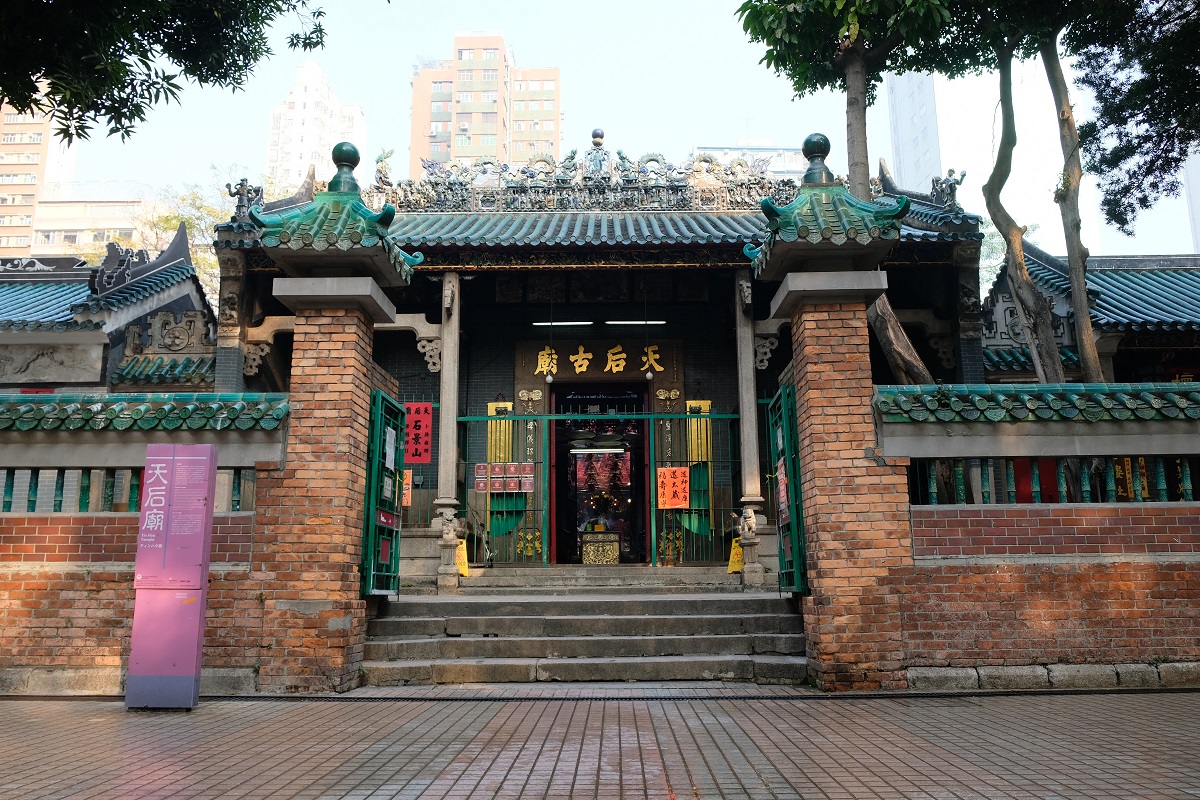
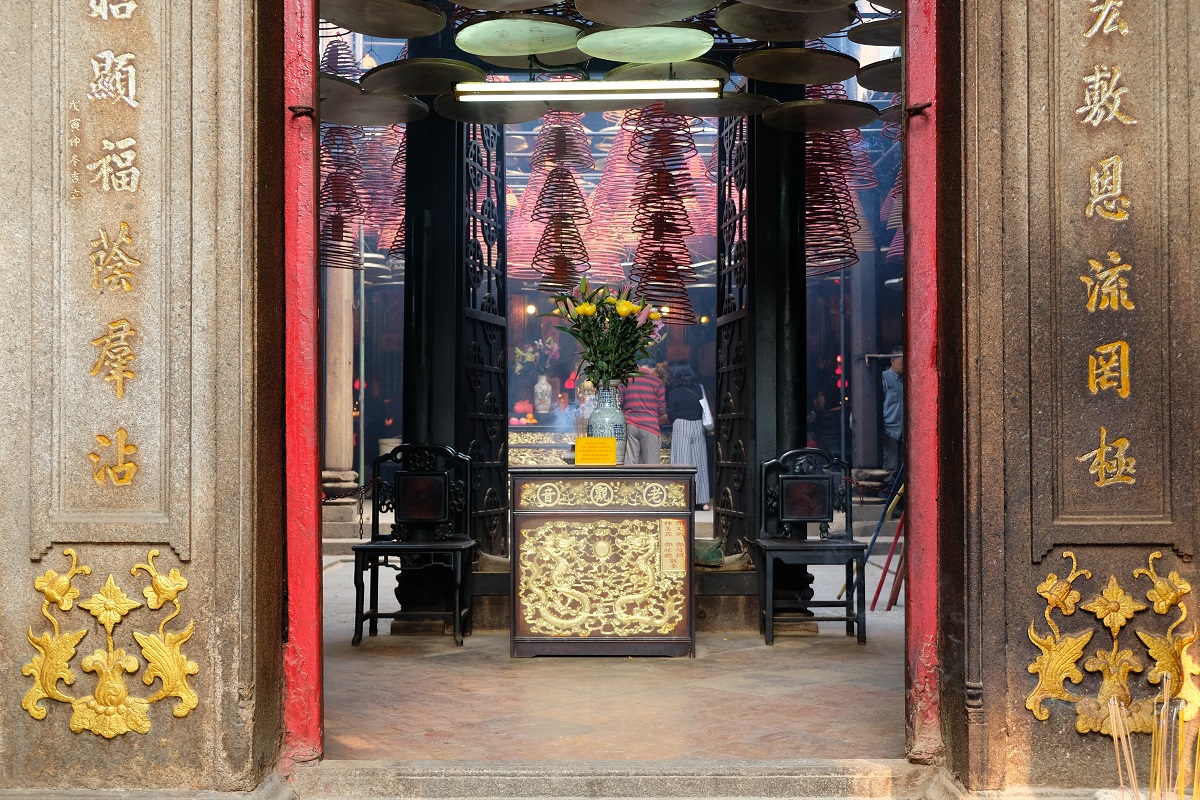
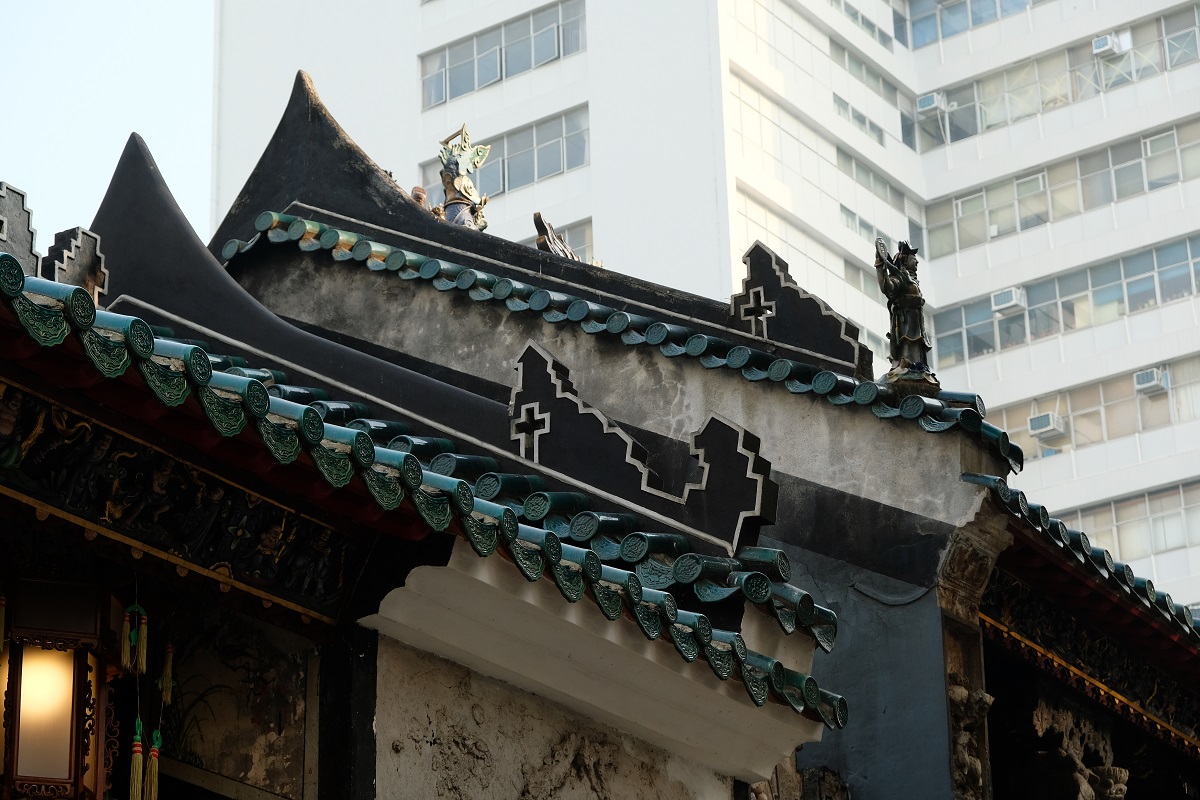


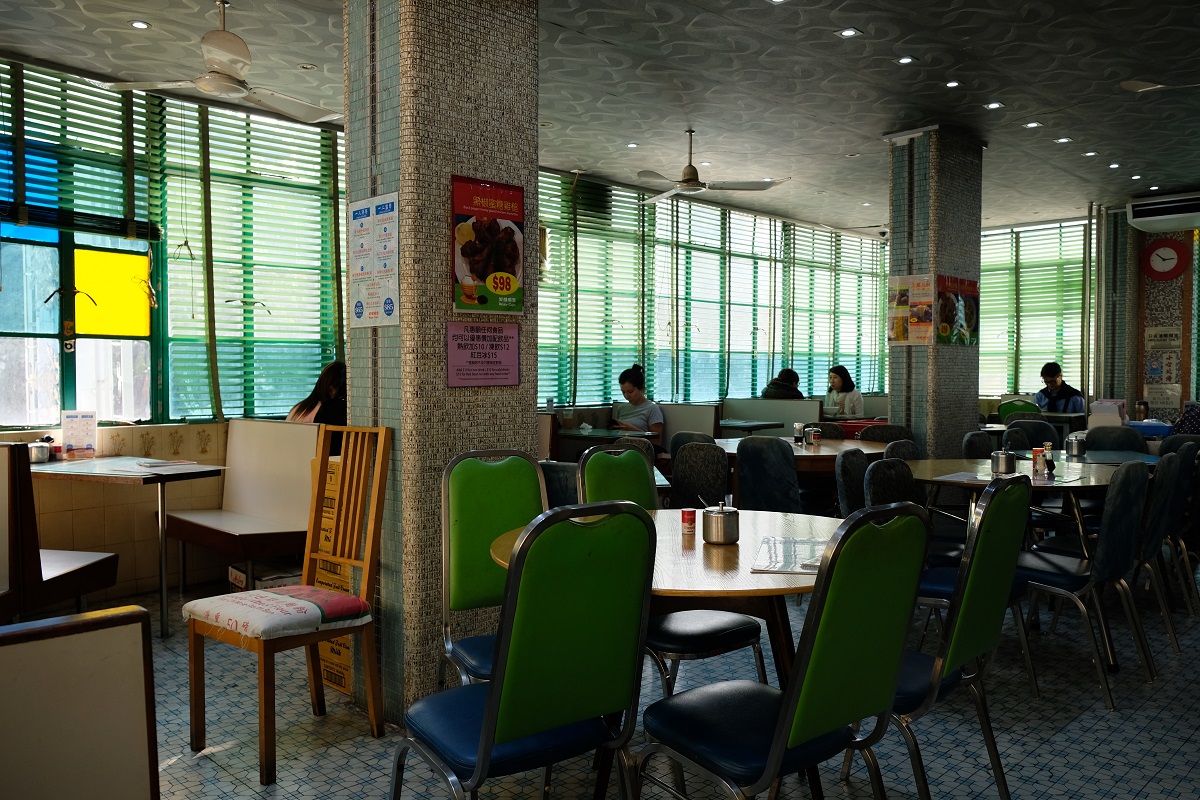



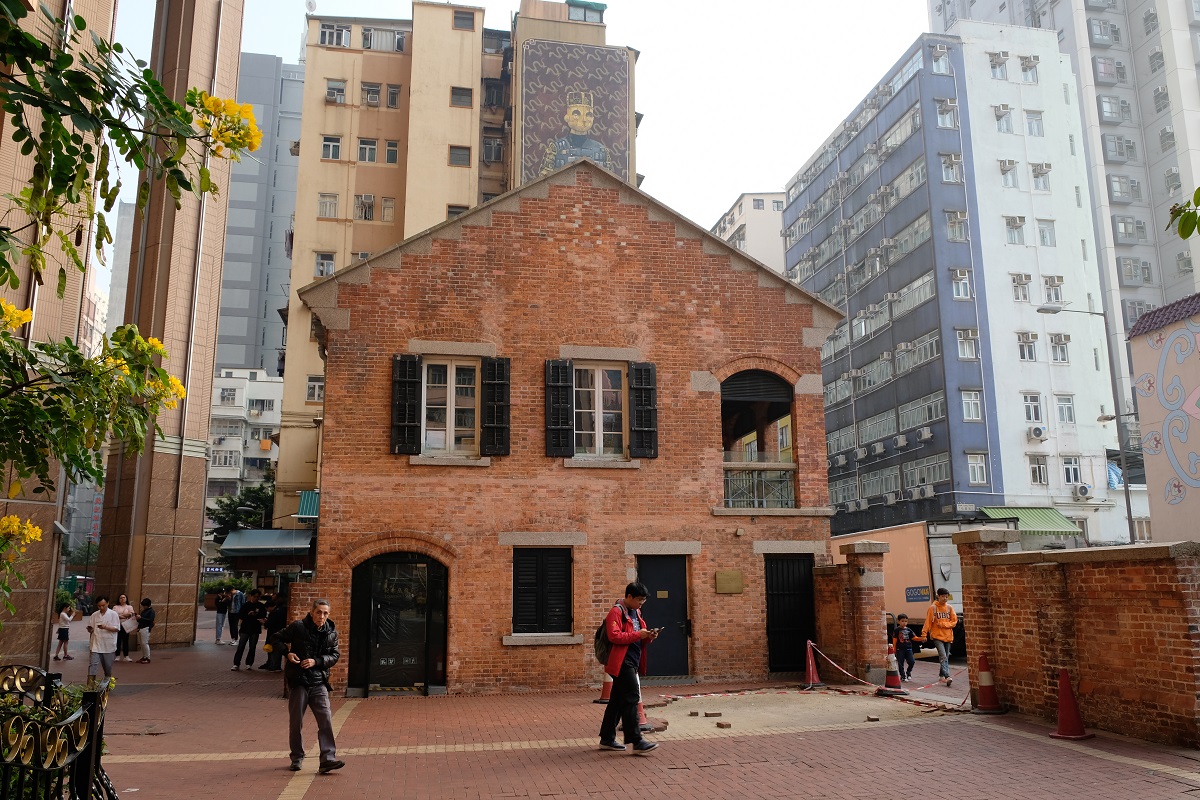
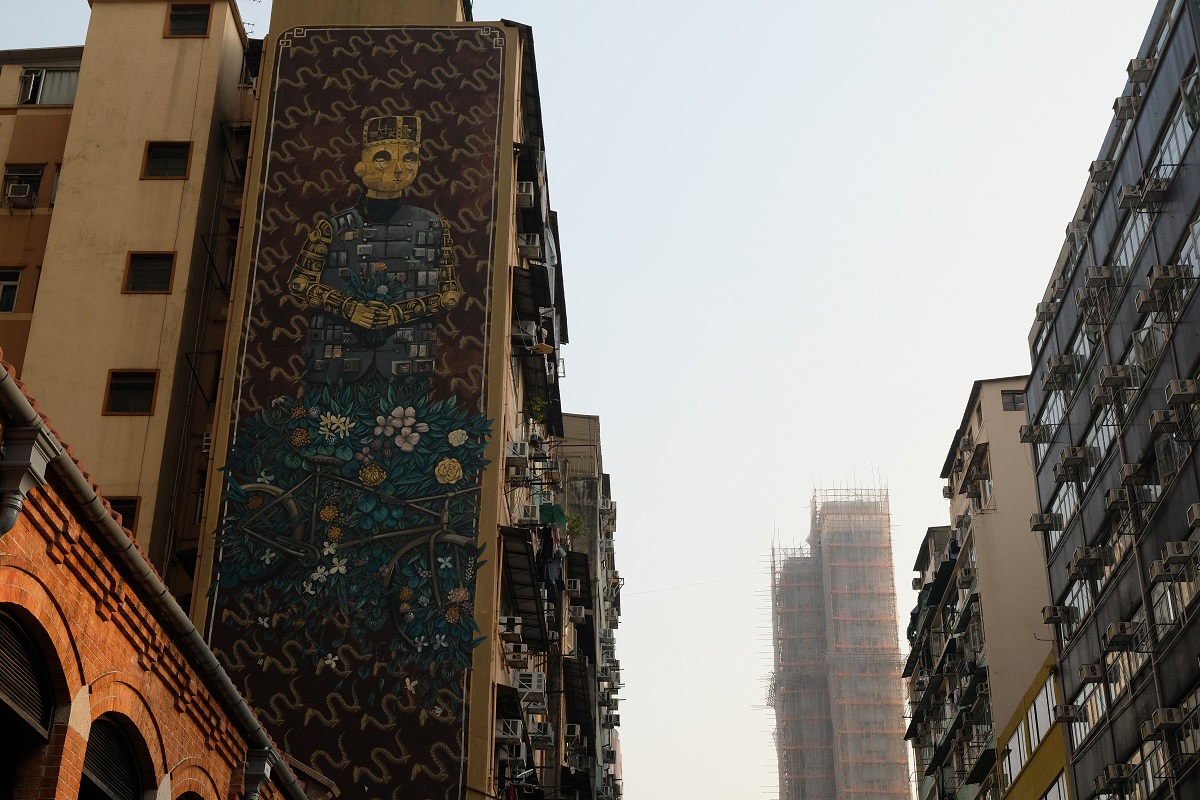
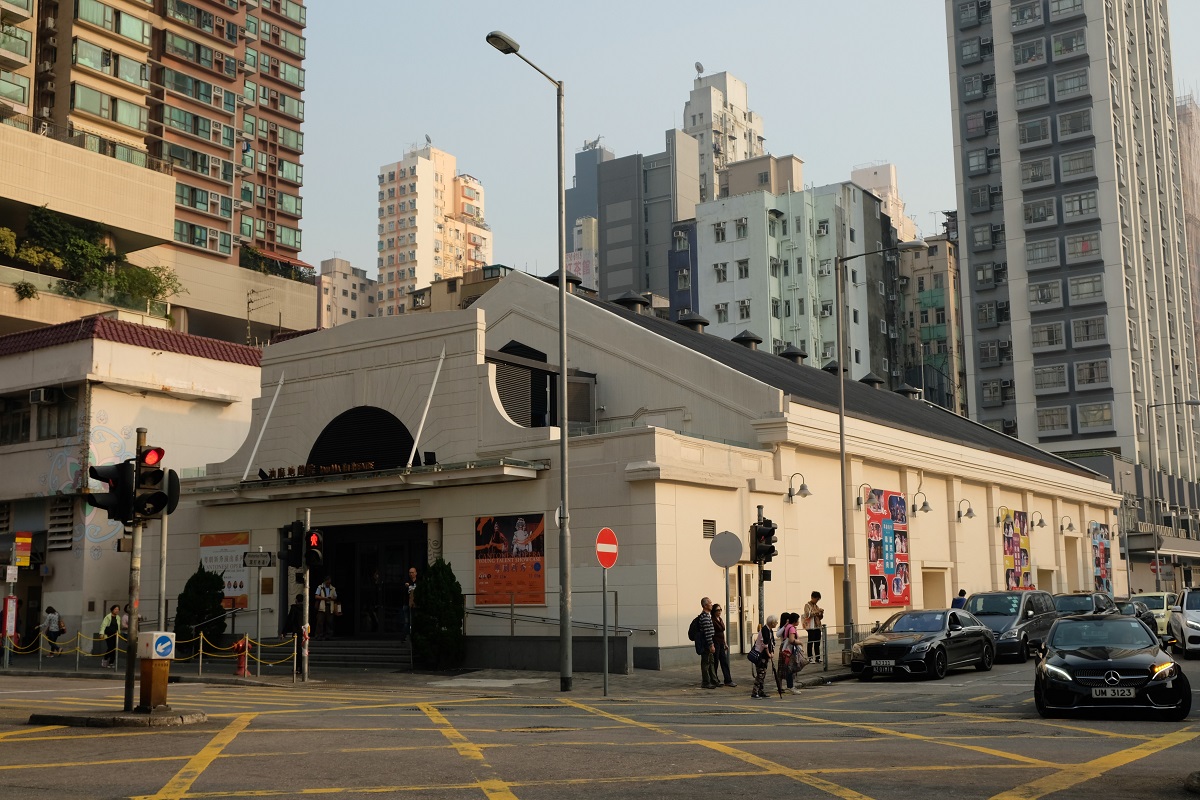



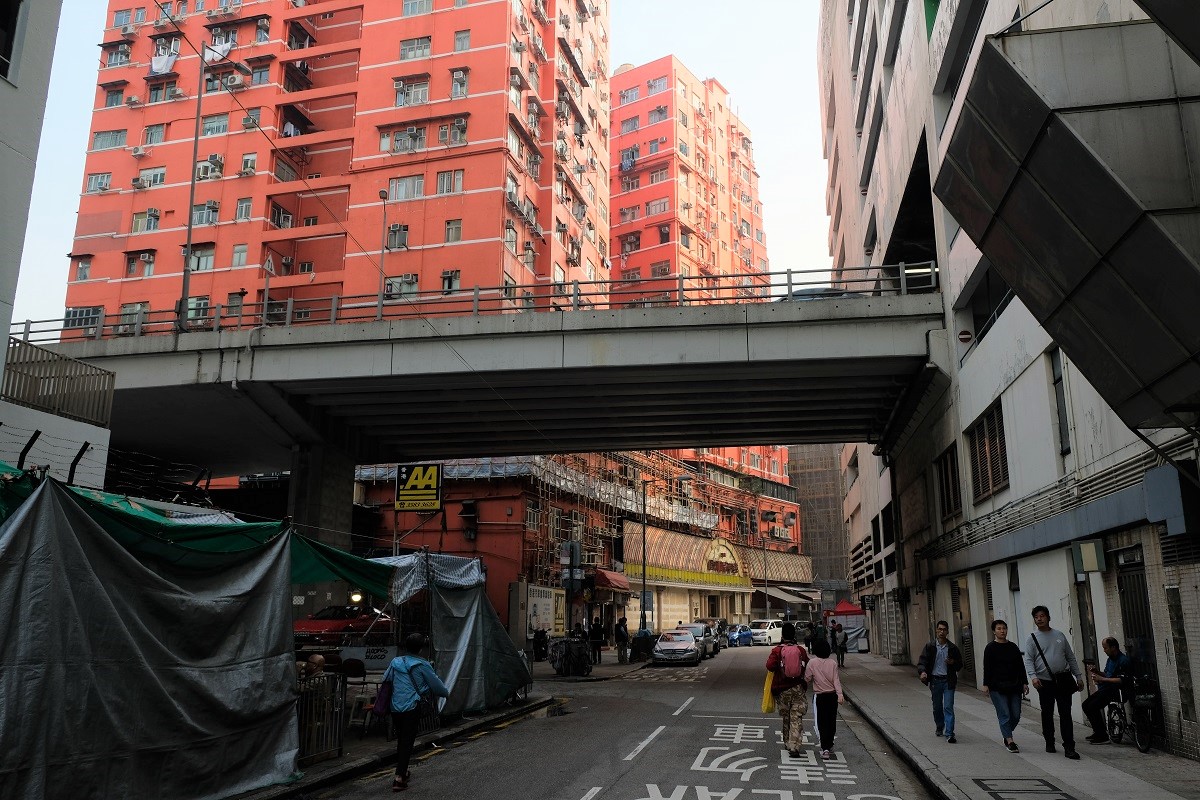
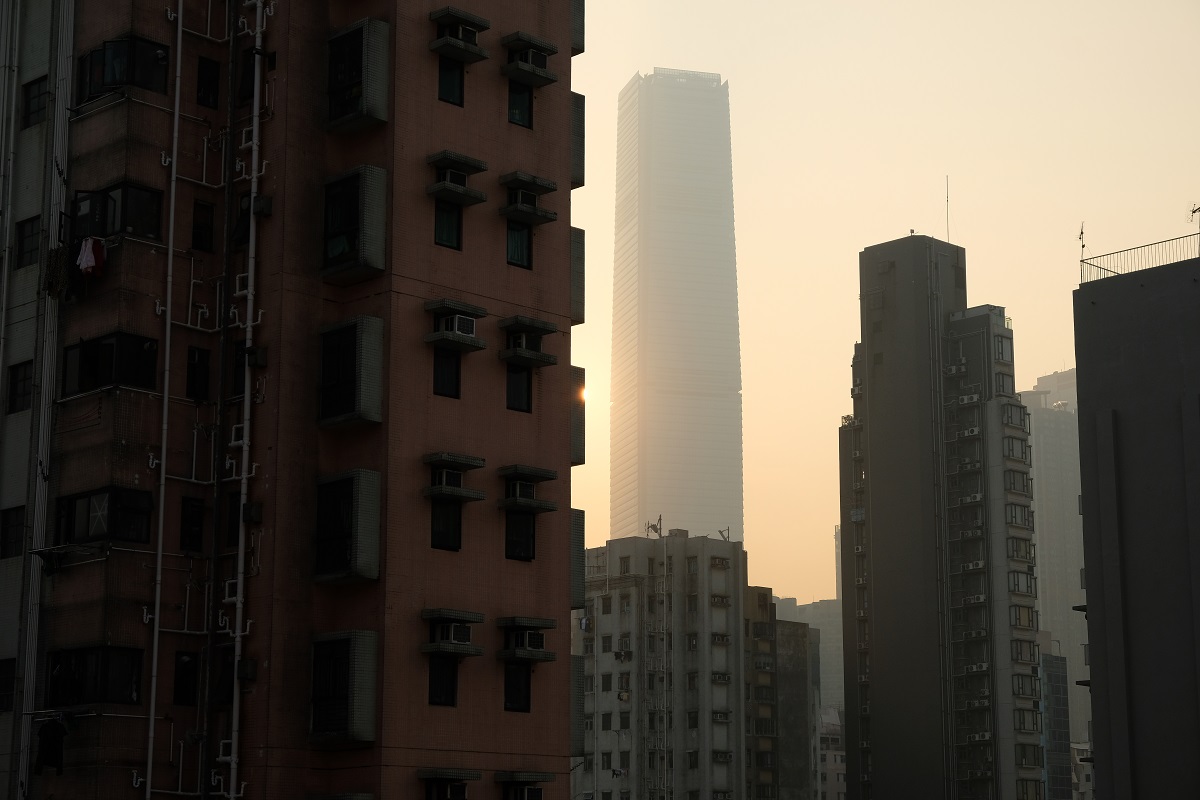
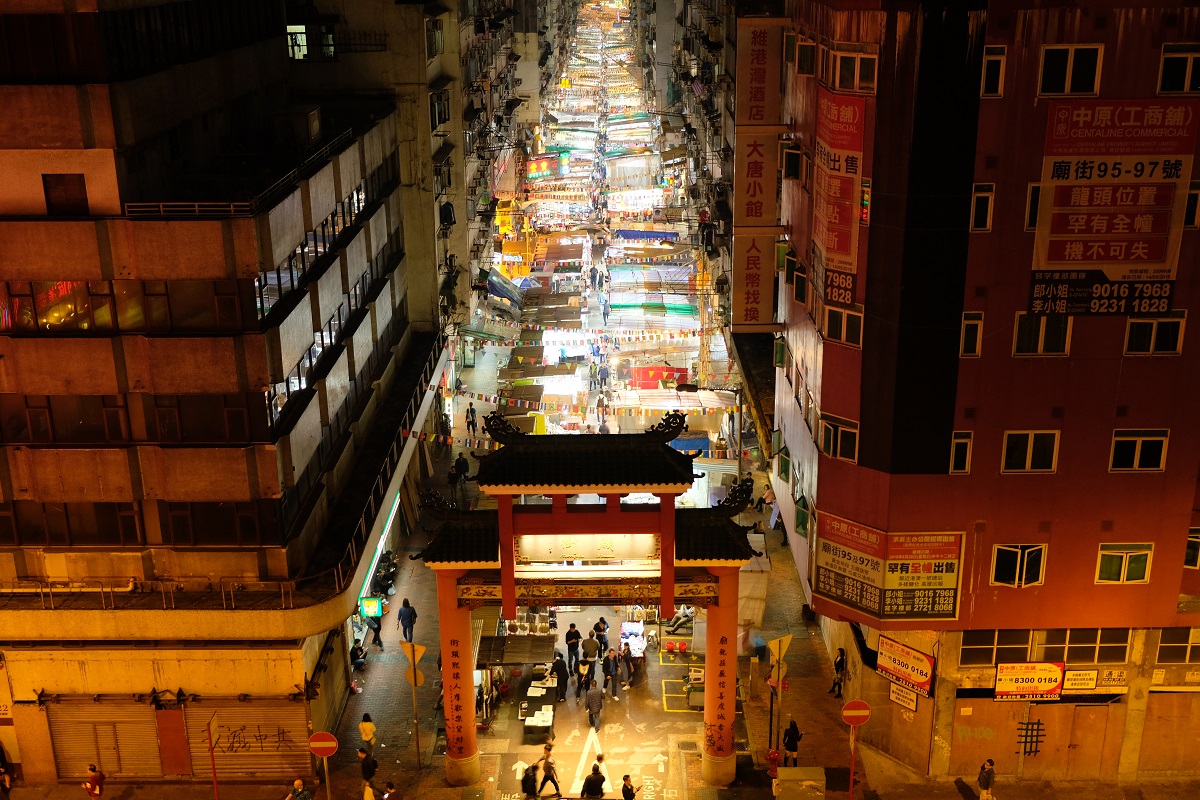
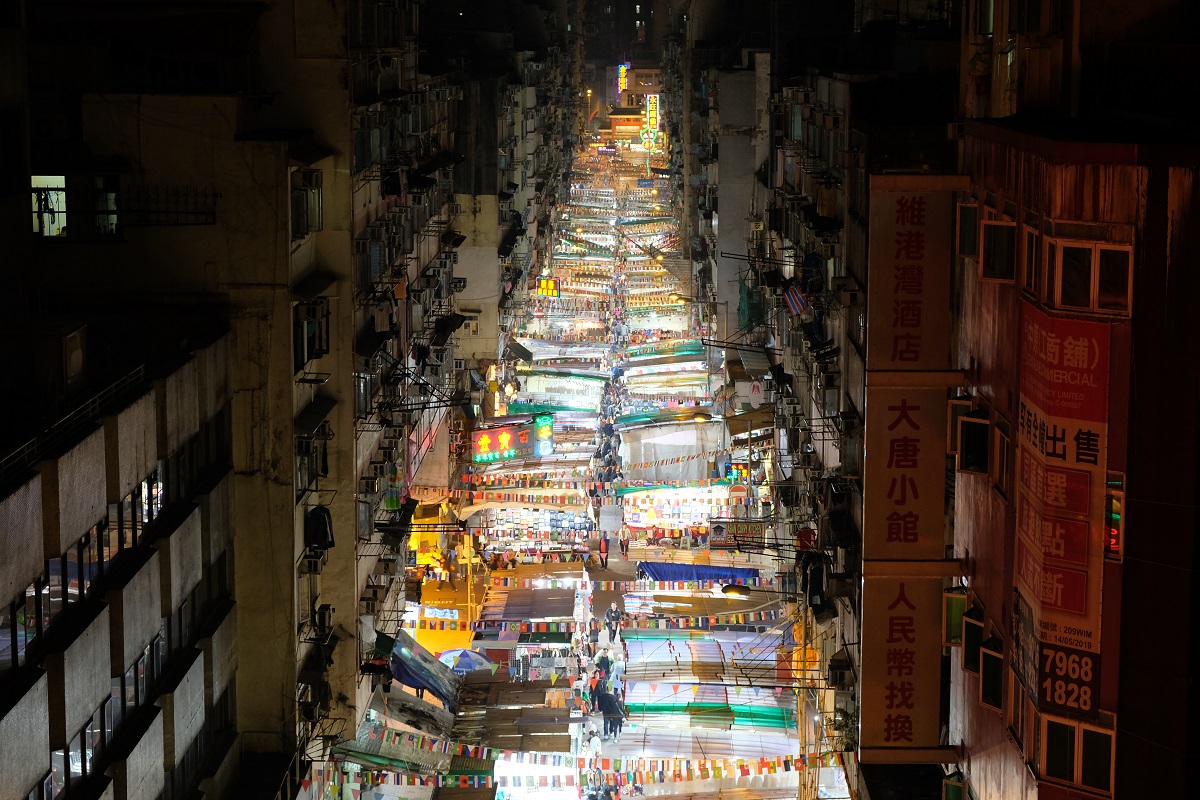

Love the shot of the night market! All the essence of an old HK seems to be there 🙂
LikeLiked by 3 people
Thanks Len. From our quiet vantage point, it was very interesting to watch the vendors at the night market preparing their stalls. In fact, seeing the city from a bird’s eye view is one of the best ways to appreciate Hong Kong.
LikeLiked by 2 people
Loves these snaps 🙂
LikeLiked by 3 people
Thank you, Deepak.
LikeLiked by 2 people
Thanks for the inspiration Bama. I’ve never been to Kowloon but will make a point of it on my next trip to HK 🙂
LikeLiked by 2 people
You’re very welcome, Tali. Kowloon is an interesting place. If you have enough time in this part of Hong Kong I also recommend a park which was the site of Kowloon Walled City, a bizarre enclave within the then-British colony with an intriguing history.
LikeLiked by 2 people
What a lovely walk through Hong Kong, Bama. I love the shot of the night market – such different perspective from being on the ground.
LikeLiked by 2 people
I think Hong Kong is a city that needs to be seen both from the ground level and from above to understand its character, and doing the latter is just as easy as the former thanks to the many hills in the territory, as well as the plethora of skyscrapers and multi-story buildings all over the city.
LikeLiked by 1 person
I love your posts about Hong Kong. There was a certain relaxed casual vibe about the city that I liked in my one foray during an extended lay over. I hope that does not disappear.
LikeLiked by 1 person
Thanks, I.J. Although Hong Kong is known as a city that never sleeps, I kind of understand why you felt that way about it. While the city center itself is always busy, but I remember there are always much quieter corners to escape to. I certainly hope that whatever happens, the city will somehow retain its character that makes it unique.
LikeLiked by 1 person
Shanghai, Beijing, Guangzhou have quite individual character. I believe it should be possible for Hong King to retain its individuality.
LikeLiked by 1 person
I surely hope so.
LikeLiked by 1 person
Lovely pictures that refreshed my memories! I love your posts!
LikeLiked by 1 person
Much appreciated! It seems like many people have fond memories from their past travels to Hong Kong.
LikeLike
Is that so? I didn’t anticipate that.
LikeLiked by 1 person
At least that’s the impression I get. 🙂
LikeLiked by 1 person
Great! 🙂
LikeLiked by 1 person
Nice shot of Temple Street night market. I remember staying at Prudential Hotel nearby during my first visit to HK. But I never got a good view of the night market.
LikeLiked by 1 person
I just looked up the exact location of that hotel on Google Maps and yes it is really close to Temple Street. Well, maybe next time. 🙂
LikeLiked by 1 person
Yau Ma Tei seems like an interesting place. You have captured the essence so well. Loved the photographs and the write-up. Thank you for sharing, Bama!
LikeLiked by 2 people
Glad you enjoyed this, Nanchi. There are quite a lot of interesting places in Kowloon, but apart from the night market, I feel like Yau Ma Tei is not really on most tourists’ radar.
LikeLiked by 1 person
Nice tour of Hong Kong which I visited in 2010 (I was there on business but was able to add a few days to allow some explorations…) It is a very interesting city. (Suzanne)
LikeLiked by 1 person
There has been a lot of developments in Kowloon alone in the past ten years. But I believe areas like Yau Ma Tei haven’t changed much in the same span of time.
LikeLike
I’ll have to keep Kowloon in mind for our next stop in Hong Kong. Anytime we fly to Asia we usually have a 12+hr layover in Hong Kong so we try to visit one place each time. As with all of the other comments, I love the picture of the market at night.
LikeLiked by 1 person
12 hours layover sounds like just about the right amount of time to explore one or two places in the city. And since Kowloon is one of the stops of the Airport Express, you can conveniently wander around this part of Hong Kong where Yau Ma Tei and a few other interesting places are located.
LikeLiked by 1 person
If I ever do return, I hope to visit some of the places you and James have highlighted on your blogs. I do like visiting the older sections of a city, especially ones that aren’t touristy.
LikeLiked by 1 person
Yes, James and I have written extensively about interesting places in Hong Kong (and I still have two more stories for future posts), and some were not really touristy at all when we went there. I hope you’ll find yourself returning to the city sooner than later!
LikeLike
That lit-up night market was worth waiting for!
James was telling me about the fusion “soy sauce western” foods that are fun to get in Hong Kong, like that fried rice with the melted cheese. To me, it’s a very strange mix, but I’d be willing to try it (at least once!). It does seem warm and comforting. As you know, we had hoped to spend a fun day in Hong Kong on our way home in February, but that’ll have to wait until we are all cleared to travel (so very far) again. Can’t wait to see this awesome city someday.
LikeLiked by 1 person
The contrast between those dark buildings and the well-lit street really was an interesting sight. There are a lot of night markets across Asia, but this is certainly among the most photogenic.
In Indonesia, we also like to mix western and Indonesian flavors, although this often means making dishes from the west a lot spicier. I think the combination of different ingredients and techniques often results in new, delicious dishes, including soy sauce western food in Hong Kong which I also love.
I really hope that you would find a chance to return to Southeast Asia in the not-too-distant future, and make a stopover in Hong Kong to get a glimpse of what James and I have been raving about. 🙂
LikeLiked by 1 person
It’s quite something that it was a challenge to find a place you hadn’t been to! I think it’s wonderful that you have immersed yourself so fully in discovering Hong Kong (much as you do with your weekend explorations of Jakarta). The photo of the night market is incredible. It looks like it goes on forever. Does it run every night?
LikeLiked by 1 person
The same thing goes for me every time James comes to my hometown, Semarang. I’ve taken him to the most interesting places in the city now I always have to think hard and do my research before we go back.
Yes, the night market does run every night. Amazing, isn’t it?
LikeLiked by 1 person
Love your photos of the night market. The effort and wait were well worth it!
LikeLiked by 1 person
We were standing for about two hours at the carpark building before we decided to call it a day. Luckily, the night market turned out as impressive as I imagined.
LikeLiked by 1 person
I really enjoyed this post, Bama – thank you for the little trip down memory lane! I didn’t fully appreciate Jordan or its famous night market until just a couple years before leaving Hong Kong. At the time some friends had invited me to join them for dinner at a really cozy Filipino restaurant just around the corner from Temple Street; as we were walking around afterwards I suddenly realized Jordan was the grungy, neon-lit Hong Kong of the movies. You don’t really get that same feeling on Hong Kong Island except in the more traditional neighborhoods that haven’t seen a lot of gentrification. If we make it back there this winter I think we should sit down at one of the road-side restaurants on Temple Street for a dinner of claypot rice. It’s a quintessential Hong Kong experience that I haven’t actually tried out!
LikeLiked by 1 person
Thanks James, and thank you for taking me there. I remember back in December 2018, we also went to Temple Street to have lunch at a Nepalese restaurant. But back then, I didn’t realize that it was the same location of the iconic night market. Speaking of gentrification, I can’t help but think of Jakarta. I noticed recently there have been such efforts to transform some parts of the Indonesian capital to look more like other world cities. But I believe that in order for the metropolis to retain its chaotic but charming character, gentrification shouldn’t be the only way to go. Claypot rice for wintertime dinner sounds very appealing! We definitely should try that out.
LikeLiked by 1 person
What a great slice Bama. Makes me want to go back and explore more! Wonderful shots of the night market.
Alison
LikeLiked by 1 person
Hong Kong is one of the most photogenic cities I’ve ever been, and its narrow streets and alleys are full of hidden gems like what you see in this post. You should return one day, Alison!
LikeLiked by 1 person
einenrecht schoenen tag und lkiebevolle gruesse an dich von hiltrud jasmin dama
LikeLike
Interesting to see crosses on Chinese temples. Makes you wonder why, but I love this, shall we say, ‘cultural borrowing’ (I hate the term ‘appropriation’).
Kowloon has some great architecture, especially those smooth-edged, long-windowed buildings such as the one where Mido cafe stands.
I’ve been to Kowloon only once and I found it, shall we say, a bit overwhelming. The heat, the noise, the smell, the flood of people… I’ve been wanting to come back again. Sooner or later, hopefully!
Fabrizio
LikeLiked by 1 person
I always find it fascinating when buildings (both secular and not) incorporate different cultural elements, including symbolism from religions. And yes, in this case the ‘cultural borrowing’ is right term. Give it some more time then it will become ‘cultural assimilation’.
To me the flood of people in Kowloon is still bearable than Causeway Bay, and this me saying as a person who comes from the world’s most-densely populated island. However, the latter is also thrilling because of the very same reason. It sounds strange, I know.
Hope you’ll return to Hong Kong one day, Fabrizio!
LikeLiked by 1 person
Absolutely love these shots. Some really fantastic contrasts in there – HK looks like a beautiful place to explore. The night market in particular sounds brilliant. Thanks for sharing!
LikeLiked by 2 people
Hong Kong really is a fascinating city. There has been a lot of developments in Kowloon in recent years, and I can’t wait to see West Kowloon Cultural District once it is completed. Luckily, more traditional neighborhoods like Yau Ma Tei still retain their character. Thanks for reading!
LikeLike
Nice blog, great shots.
LikeLiked by 1 person
Thank you, Saania. Glad you found this interesting.
LikeLiked by 1 person
My pleasure, followed you 🙌🏻
LikeLike
What a beautiful photos! Especially the night market that you captured from above. Just by seeing it, I could almost feel the bustling vibes. It’s more interesting as it also captures the high-rise housing building, very Hong Kong! Anyway, the baked seafood rice looks so yum!
LikeLiked by 1 person
Thanks Mira! You summed up the appeal of this place really well — they were also my reasons why I wanted to see this night market. The baked seafood rice was delicious, but the portion was a bit too big by Indonesian standard. 🙂
LikeLike
As a seafarer, you’ve got me wanting to visit all 100 Yau Ma Tei’s Tin Hau temples when travel to Hong Kong … and the theater too!. love the picture of the engineer’s office surrounded by more modern building with the beautiful street art peeking out from behind. And the Temple Street Night Market from on high is masterful. Sad to think of all the protest slogans being erased from the city center with those in Kowloon probably also gone now.
LikeLiked by 1 person
Aha! That’s a brilliant idea, especially for you as a person whose life revolves around the ocean. I suspect that those protest signs in Kowloon have been erased by now, and with the new security law Beijing is imposing upon Hong Kong, I’m afraid freedom of speech will one day become a remnant from the past in this city.
LikeLiked by 1 person
Love this post Bama as it took me right back to the streets of Kowloon. For some reason we landed up there on our very first time in Hong Kong and we loved exploring all the streets and food and markets. Your photos of the night market from above really do capture the atmosphere and vibe of the place. We have been reading about what is going on now with China flexing it’s muscles now that the U.S. is distracted by Corona and so much else. It is tragic really. Thank you for an interesting trip down memory lane…
Peta
LikeLiked by 1 person
It’s really heartbreaking to see the current developments in Hong Kong, especially in the past few days when it became clear what the new security law encompasses.
But I’m glad this post brings back some fond memories of your trip to this part of the city, Peta.
LikeLike
I recently watched the Anthony Bourdain Parts Unkown episode from Hong Kong from 2017. If you want to feel sad about a recently vanished world, go watch that.
On a happier note, I love those overhead photos you got of the market. Those are some cool shots. One thing from this story is totally unbelievable – you said you walked slowly with James. How is that possible?
LikeLiked by 1 person
It seems like in a relatively short time, Hong Kong has changed into a place that sounds barely recognizable anymore.
Ha! That’s what living in Indonesia does to you. He has considerably slowed down since that time when he took you on a whirlwind walking tour of Hong Kong. Now, if you walk with him, you can stop and take photos without having to worry that the next time you try to look for him he’ll already be out of sight. 🙂
LikeLike